While Flying is Still Relatively Safe, MWCC Community Acknowledges Recent Events
By Benjamin Heffner Staff Writer
Since the January 29, 2025 fatal Mid-air collision in Washington D.C. between an American Airline and a Black hawk helicopter, several other incidents have made their way into the news, including a fatal MedVac crash in Philadelphia, a Delta Airlines flight overturning and catching fire on the runway while landing in Toronto, and a midair collision in Arizona. These incidents, coupled with President’s Trump’s administration’s laying off of over 400 Federal Aviation
Administration employees and 200 Transportation Safety Administration, has led to flying in the news more frequently. In relation to this news, some at Mount Wachusett Community College find themselves reflecting on the safety of air travel, even as it remains statistically less dangerous than driving.
According to the National Transportation Safety Board (NTSB) press release on February 14, 2025, the D.C. plane crash, which killed all 64 passengers and crew aboard the regional jet and all 3 crew
aboard the helicopter, may have been a result of failed communication between the helicopter and air traffic control.
In that press release, Chairman Jennifer Hormendy, said “CVR data from the Blackhawk indicated that the portion of the transmission that stated ‘pass behind the [CRJ700]’ may not have been received by the Blackhawk crew.”
However, a politicized movement led by President Trump suggesting the crash was the result of the Federal Aviation Administrations
(FAA) diversity, equity, and inclusion (DEI) goals, and the fault of former Presidents Joe Biden and Barack Obama, as well as former Secretary of Transportation Pete Buttigieg, have led to rumors and false claims about an uptick in news coverage involving aviation crashes and near-misses.
Trump claimed “problematic and likely illegal decisions during the Obama and Biden Administrations that minimized merit and competence in the FAA.” Meanwhile, the ongoing NTSB investigation
Op-Ed: The Most Pressing Threat to Human Life Persists, Mostly Unnoticed
By Holden Baird Observer Contributor
Recent headlines illustrate the news media’s fractured focus between a bewildering number of immediate domestic and international concerns. The stock market hiccups as tariff negotiations stumble, the wars in Gaza and Ukraine rage on, the newly-minted DOGE initiative continues its disruption of the federal government, the executive branch issues a dizzying flurry of executive orders, controversy erupts over alterations to immigration policy, and a steady rollback of LGBTQ+ rights and protections pushes on. In general, the average American is largely preoccupied by skyrocketing living costs, which played a significant role in determining the outcome of the 2024 Presidential election.
According to the Bureau of Labor Statistics, energy bills

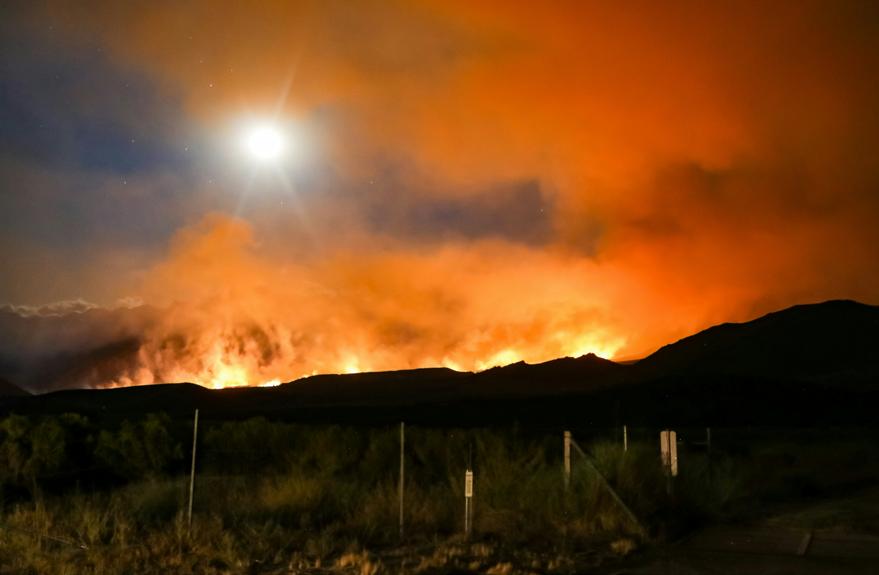
are up 40% and groceries by 25% since 2020. Housing prices surged nearly 18% in 2021 alone as indicated by the Freddie Mac House Price Index. Despite this, Congress has not approved a federal
minimum wage increase since 2007 and it presently sits at an astonishing $7.25 per hour. Understandably, public consciousness is dominated by day-to-day matters of survival; a few have the remaining
has found no evidence of a direct connection between DEI initiatives and the accident.
Assistant Professor of Physics and Mathematics, Dr. Peter Olszak, reflected on the recent aviation accidents. “It seems like there’s a series of events that are closely related together,” said Olszak. He further explained that aircrafts rely on flight and lift, in addition to Bernoulli’s principle, to keep them in the air. “Lift is the primary source, but
mental real estate available to concern themselves with the more far-reaching issues detailed above. Yet the greatest continued on page 3 “A Pressing Threat” >>> continued on page 3 “FAA Scare” >>>

President Trump Address Congress and The Nation
By Desiree Leader Staff Writer
On March 4, 2025, President Donald Trump addressed a joint session of congress in the Capitol Building. The speech started at 9:14. P.M. and the gathering resembled a pep rally with chants of “USA” coming from the Republican section of the room as the president appeared, exclaiming, “America is Back!”
The Democrats also showed camaraderie amongst themselves, with most of the women wearing shades of pink to express concern over the new administration’s policies concerning women. Many of the Democrats also held paddles bearing phrases like “Musk Steals,” “Save Medicaid,” and “Protect Veterans” in silent protest of the Trump Administration and its policies. Not so silent was
Representative Al Green, Democratic Congressman from Texas, who spoke out during the address. Representative Green stood up and called out to the President several times, even after repeated warnings from the Speaker of the House. He was removed from the auditorium. The Congressman later explained that he was upset because “Medicaid ought not be cut” and admitted that under the same circumstances he would do it again.
While the Republican section of the room cheered, often on their feet, the Democratic portion of the audience remained seated for the entire event, at times booing the President.
Trump, addressing only the Republican section of the audience for most of the speech, spent some time assuring congress that “it has been nothing
but swift and unrelenting action to usher in the greatest and most successful era in the history of our country.” In reference to the speed of the changes, Trump said the new administration had “accomplished more in forty-three days than most administrations accomplished in 4 years, 8 years — and we are just getting started!”
Trump also mentioned Greenland and his suggestion that they join the United States, stating, “we strongly support your right to determine your own future,” but then went on to say, “one way or the other, we will get it!”
The President addressed the Democratic Congress several times, addressing them as “radical left lunatics” and “These people, the Democrats.” He also took a moment to refer to Elizabeth Warren as “Pocahontas.”
Brian Contois, Computer
Information Studies major, watched most of the broadcast on Tuesday night and had some concerns. He felt that the event was “very high school –I thought I was at a frat party” commenting on the chants of “USA” that were coming from the congress. Contois also questioned the “transgender mice” that Trump alluded to, saying it was false. It appears that the term Trump should have used was Transgenic, which means they are genetically modified for experimentation.
Nursing major, Helen Aviv, agreed, saying that chanting was something not normally seen at a Presidential address. “Why are we doing that? It was like a political rally.” She also felt that he “referred to the democrats in derogatory terms,” and that it was inappropriate to use the name of an Indigenous woman
(Pocahontas) as a slur. Trump disagrees with his critics, stating that he “inherited an economic nightmare,” and that his administration is making cuts. He also credited how the administration’s handling of issues at the southern border, which was detailed as a National Emergency starting last month, showed the lowest ever recorded numbers of illegal immigrants crossing the border. “They heard my words and decided not to come,” he said. What the next forty-six months holds remains to be seen. as well as whether or not there is truth to many of Trump’s claims to having the biggest numbers, and the best plans. One thing is for sure: at 1 hour and 45 minutes, this speech was certainly the longest.
Free Fresh Food: Marty’s Market Produce Boxes
By Wendy Joubert Observer Contributor
Fresh produce is available to MWCC students at Marty’s Market on Tuesdays. The boxes are donated by Growing Places, a nonprofit based in Leominster, MA, and dropped off at Marty’s Market every Tuesday afternoon. A limited supply of boxes are available. Produce boxes are free to all MWCC students and you don’t need an account with Marty’s Market to pick one up. The produce that is available is seasonal and will change throughout the year.
Students weigh in on what they think of the boxes:
“There’s a good variety. The stuff is fresh. You can take a whole box or sift through what you need,” said Brianna Desautels, Marty’s Market staff and Dental Hygiene student.
“I like that there’s a fresh variety of local vegetables,” said Kelsey Cobb, an Allied Health student.
If you’re a MWCC student interested in a free produce box, visit Marty’s Market located in room H155 on the Gardner Campus.



FAA Scare
>>> continued from page 1
you also need drag and force in slowing you down,” Olszak said.
Many MWCC students and faculty agreed that while the recent news of aviation crashes and near-misses is concerning, it doesn’t deter them from flying in the near future. Andie Libby, a Human Services major, faces a fear of flying due to her claustrophobia. “Being flung into the air without the chance to get out for multiple hours, is EXTREMELY nerve racking,” she said. Vana Kingsley, a journalism major, said that while she doesn’t see a need to fly at the moment, she argues that recent aviation tragedies cause people to interpret something bad. “I understand the practicality of that, but mostly, I wish we could all be sad for the victims without our own fight or flight responses sensing some sort of broader
danger and kicking in”, she said. However, some like Bob Meyer, the director of Veteran Services and a former air traffic controller, feel that aviation has become unsafe in recent years. “I think things are worse than when I was an air traffic controller many years ago,” Meyer said. These concerns echo those raised by FAA employees last November.
A fifty-two page report was released detailing the FAA should be protected from annual funding battles in Washington in the midst of Congress trying to resolve a potential government shutdown. Perhaps no student or faculty member has experienced a more terrible fear of flying than Kyle LeGrand, the kitchen manager for the Green Street Café. LeGrand cites many reasons, mostly claustrophobia.
“The idea of being stuck in an aluminum tube without access to fresh air, concerns me,”
LeGrand said. LeGrand also added that the last time he flew over 20 years ago from Orlando to Pittsburgh, his aircraft hit a significant amount of turbulence that resulted in oxygen masks having to be deployed. “The wings were shuttering and all of the lights in the fuselage went out,” he said.
“As a mental health practitioner, I see students navigating a wide range of fears, and flying is a particularly common one,” said Leanne Hadsel, MWCC’s mental counselor. Hadsel gives a couple of coping strategies for fear of flying, including preparing your mind and body in advance, regulating your nervous system, shifting your thinking, bringing distractions, and seeking support. “Fear, including aviophobia (fear of flying), isn’t a sign of weakness—it’s simply the brain’s way of trying to protect you,” Hadsel says.
A Pressing Threat
>>> continued from page 1
threat, the wide-reaching consequences of which manifest in nearly every realm of public interest, has predominantly been pushed to the periphery. Anthropogenic climate changethat is, alterations to the world’s climate system that can be concretely traced back to human activity- threatens the present and future wellbeing of humanity on a magnitude far greater than any economic fluctuation or military conflict.
The monstrous repercussions of climate change struck as recently as January of 2025, when wildfires burned over 57,000 acres of San Diego County and the Los Angeles metro area, destroying more than 18,000 homes and buildings, killing 29 people and forcing the evacuation of over 200,000 area residents. Total economic losses are predicted to exceed $50 billion. The wildfires were dramatically amplified when the dry, 100-mile-per-hour Santa Ana winds merged with severe
ongoing drought conditions and an abnormal accumulation of vegetation resulting from record-breaking storms the previous year. Just three months earlier, Hurricane Helene tore through North Carolina, dealing tens of billions of dollars in damage and killing 106 people with another 26 still unaccounted for. Researchers from the Lawrence Berkeley National Laboratory and World Weather Attribution are in agreement: abnormally warm ocean waters dramatically increased Helene’s rainfall, strengthened her wind speeds, and fed her the energy required to inflict such extraordinary devastation. Yet in spite of the scientific consensus regarding the cause behind these catastrophic weather events, public discourse and media coverage have primarily centered on extraneous political arguments over endangered species of fish and fundingrelated finger pointing. The politicization of climate change has made it increasingly difficult to see the forest beyond the

treeline.
In 2015, the United Nations adopted the Paris Agreement, an international treaty intended to address the growing threat of climate change. Under the agreement, nations would work to limit emissions with the goal of keeping global warming to less than 1.5℃ above preIndustrial levels. Staying within the limit would have required steep changes to transportation, industry and energy systems that are unimaginable amid today’s peak fossil fuel consumption. The planet exceeded that limit for an entire year between February 2023 and January 2024, an early warning sign that the climate may be dangerously close to surpassing it for good. Based on current emissions and mitigation efforts, the planet is on track to warm 2 to 3℃ above pre-Industrial levels, the climate impact of which is nearly unthinkable. On January 21, 2025, U.S. President Donald Trump ordered the nation’s withdrawal from the agreement altogether, signaling
his intention to make no effort to prevent the crisis. Anthropogenic climate change is not a hypothetical future scenario; it is an observable, ongoing phenomenon that forms the basis of one of the most extensively-studied (and rigorously challenged) scientific theories that an overwhelming majority of climate scientistsover 97% of them, per NASAagree upon. Beyond increasingly frequent extreme weather events, conservative projections for the next twenty years foretell worsening food and water shortages, rising sea levels and coastal displacement, public health crises and disease spread, all of which will contribute to worsening geopolitical tensions, resource conflicts, humanitarian crises, forced migrations, disaster-burdened economies and supply chain disruptions. However, the problem with these forecasts is that they create the misconception that climate change can only progress slowly and gradually. Because the Earth’s climate consists of many
sensitive atmospheric feedback systems, experts warn of the potential for abrupt, nonlinear change scenarios- called climate tipping points. Sudden clathrate melt, a collapse of the Atlantic Meridional Overturning Circulation, an extensive Amazon rainforest dieback, a major ice sheet collapse, or a rapid stratospheric warming that disrupts the jet stream could result in swift, widespread disaster for the planet and become more difficult to predict or avoid with each fraction of a degree of warming above preindustrial levels.
While staying informed on national and international news is important, the world cannot afford to lose sight of this issue. Worsening climate change is a problem that could ultimately render all other matters concerning human life on this planet irrelevant if it is allowed to proceed unchallenged. No citizen of Earth, MWCC students included, is exempt from its consequences.

Executive Orders Signed by President Donald Trump in 2025
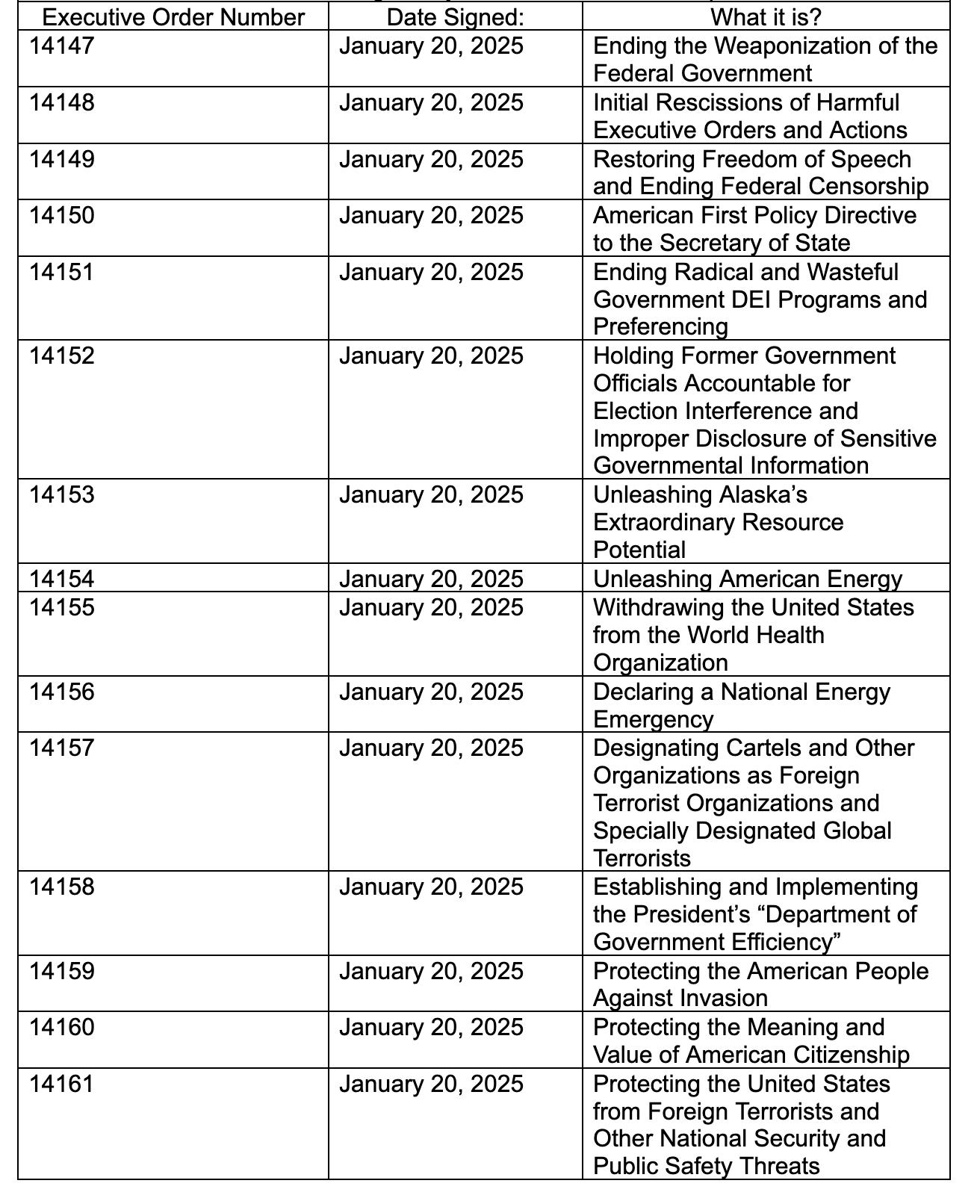
For a full list of all 89 executive orders signed by President Trump, follow the link below to the Federal Register: https://www.federalregister.gov/presidential-documents/executive-orders/donald-trump/2025
Have your own opinions on current events, hot-button issues, or events on campus? Write an opinion piece and send it to mountobserver@mwcc.mass.edu It may just end up in our next issue!

Throwing My Back Out: A Midlife Adventure
By Michelle Gelpi-Balthazar Observer Contributor
Let me set the scene. I’m bending over to pick up something harmless—maybe a sock or a kid’s toy. Nothing heavy, nothing remotely dangerous. And then it happens: my back seizes up like I just tried to deadlift a grand piano. At that moment, I know two things for sure: 1) I’m not as young as I used to be, and 2) this is going to hurt for days.
Getting older is weird. On the inside, I still feel like I’m in my 20s. I’m still the same person
who could stay up all night, eat an entire pizza, and bounce back the next day like it was nothing.
But my body? Oh, my body has other plans. These days, I can throw my back out by sneezing too enthusiastically. It’s like my spine is out here doing its best impression of a creaky old door.
The thing is, no one warns you about these milestones of aging. Sure, people joke about turning 30 or 40, but no one sits you down and says, “One day, you’ll wake up sore for no reason. Enjoy your youth while it lasts.” And they definitely
don’t tell you how humbling it is to throw your back out doing something completely mundane, like unloading the dishwasher.
To make matters worse, when you’re dealing with these little injuries, the advice you get is… questionable. “Have you tried stretching?” Yes, thank you, Susan, but my back currently feels like it’s held together with duct tape and prayers. “Maybe you should do yoga.” Great idea! Let me just contort myself into a pretzel shape while my lumbar region is plotting its revenge. What really gets me, though, is
the mental disconnect. I still think I’m young and spry. My brain’s all, “You can totally jump off that ledge or lift that heavy box.”
Meanwhile, my body’s like, “Ma’am, we’ve got a bad knee, a temperamental shoulder, and a lower back that’s one sneeze away from a full meltdown. Proceed with caution.”
But here’s the silver lining: getting older has also made me appreciate the little things. Like heating pads. Or the pure, unadulterated joy of sitting down in a really comfortable chair. Honestly, the older I get,
the more I understand why my parents were always so excited about “ergonomic support.” It’s the little wins, folks.
So, to all my fellow aging humans who still feel young at heart but whose bodies are writing checks they can’t cash: I see you. Let’s laugh through the back pain, invest in some good ice packs, and keep telling ourselves that age is just a number… even if that number comes with creaks and groans.
Laptop Buying Guide for Students: Part II
By Kent Yang Staff Writer
School is officially back in session as the spring semester begins. Whether you are a freshman entering Mount Wachusett Community College for the first time or a returning student, having the right laptop for your classes can make all the difference. However, with so many options available, choosing the right one can feel overwhelming. This guide will help you understand key laptop components, evaluate your needs, and make an informed purchasing decision. NOTE: This is Part One of this Laptop Buying Guide. The remaining parts will be distributed throughout the following editions of the Observer, and the full article can be viewed here: https://www.mountobserver. com/2025/02/laptop-buying-guide-for-college-students/
New vs. Used Laptops
When purchasing a laptop, you may consider buying used to save money. However, it is important to ask yourself whether you have the technical knowledge to troubleshoot potential issues. Used laptops may come with wear and tear, battery degradation, or outdated hardware. If you are not comfortable fixing problems that arise, investing in a new laptop with a manufacturer’s warranty may be the better option.
Determining Your Needs
Before making a purchase, consider how you will use your
laptop. Are you primarily taking notes and completing school assignments, or do you also plan to game, edit videos, or work on photography? If you need a multipurpose laptop for both school and gaming, look for a device with an adequate process and graphics card, at least 8GB of RAM, a minimum of 256GB of SSD storage, and a high-refreshrate display etc. What I’ve just listed is normally referred to as the specifications of a PC. In softwares and games, there’s often a section called “System Requirement” where it lists out the minimum and recommended specifications. If your laptop meets the minimum, it will run the program, though possibly with limitations.
Exceeding the recommended requirements ensures optimal performance. For students focused on photography or video editing who are looking to do professional work, I highly suggest a laptop with a color-accurate display and a dedicated GPU.
Prioritizing Features
Once you understand the specifications you need, differentiate between essential features and optional ones. Doing so helps prevent overspending. Ask yourself the following questions:
Do you need a laptop with at least eight hours of battery life? If so, keep in mind that longer battery life is typically found in laptops with lower-powered
processors, except for modern MacBooks with ARM chips.
Do you need a touchscreen display, or is it just a nice-tohave feature?
Will you benefit from additional ports, such as HDMI or USB-C?
By focusing on must-have features, you can refine your search and stay within budget.
Setting a Budget
Finally, set a realistic budget based on your needs. While it may be tempting to buy the cheapest option, ultra-low-end laptops (under $300) often come with insufficient storage and poor performance, leading to frustration. Below is a general
price breakdown:
Budget laptops ($300–$500): Suitable for basic tasks such as web browsing, document editing, and zoom meetings. This would be ideal for most students.
Mid-range laptops ($600–$1,200): Ideal for students who multitask, play casual games, or perform light content creation. This is the ideal price range for many consumers.
High-end/premium laptops ($1,200+): Designed for gaming, video editing, professional content creation, and advanced computing tasks. This is the ideal price range I’d consider for enthusiasts and for those who want high speed performance.


Zelenskyy’s White House Visit...
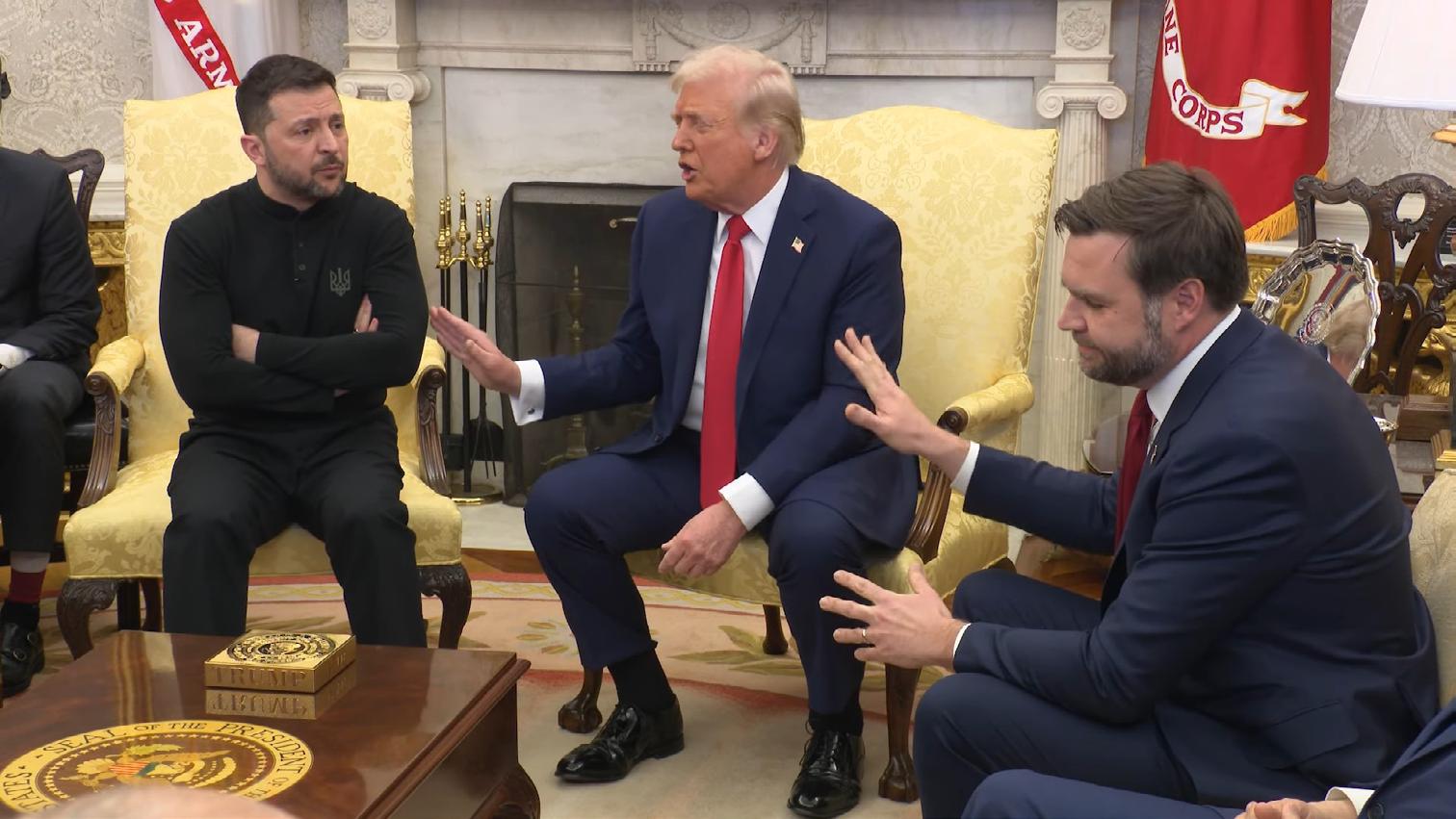
By Holden Baird
Observer Contributor
You may have seen coverage of the recent meeting between United States President Donald Trump and Ukrainian President Volodymyr Zelenskyy, which has since drawn intense reactions from both sides of the political aisle. The controversial meeting and the wider conflict between Ukraine and Russia encompass one of the most consequential of ongoing world affairs, and it could have significant future ramifications.
The meeting with Zelenskyy
On February 28, 2025, Trump and Vice President JD Vance
hosted Zelenskyy for a televised meeting in the Oval Office.
Ahead of the meeting, Trump’s stated goals for the discussion included the negotiation of a thirty day ceasefire and the finalization of an agreement that would grant the US access to a portion of Ukraine’s rare earth minerals. Control over these resources is an increasingly urgent priority among the predominant world powers as they prepare for the eventual decline of the planet’s finite supply of fossil fuels and the approaching transition into a future that will rely heavily on computer chips and lithium ion batteries. The agreement would
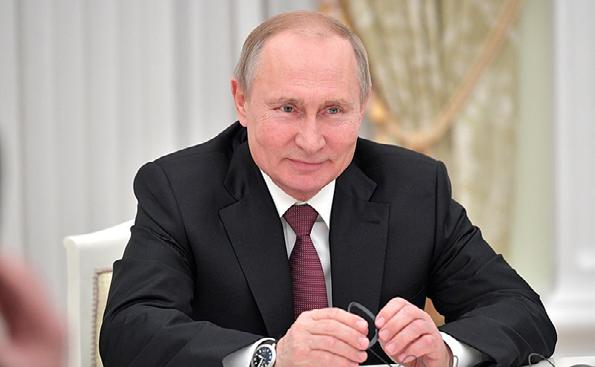
accord the US an estimated $500 billion in mineral resources, a nearly quadruple return on the $128 billion the US has contributed to Ukraine in aid.
However, the meeting did not play out that way. Around forty minutes into the discussion, a debate erupted between Trump, Vance and Zelenskyy in response to a question from a Polish reporter addressing concerns that Trump was too aligned with Putin. Trump answered, first suggesting that he was aligned with both sides, then saying that he wasn’t aligned with anyone before finally settling on an alignment with the United States and the world. Vance attempted to clarify the President’s response, suggesting that diplomacy was the basis of Trump’s approach and that it could potentially resolve the conflict. A combative tone settled over the conversation as Zelenskyy took issue with Vance’s answer, pointing out his 2019 diplomatic negotiation with Putin for a ceasefire, which Putin later violated. An argument ensued, which escalated to an abrupt termination of the meeting
before the ceasefire and mineral deal could be agreed upon.
Why does this matter?
Although negotiations have continued despite the contentious Oval Office summit, it has sent shockwaves throughout the nation and the world. Generally supportive of Zelenskyy, Democratic lawmakers have unsurprisingly denounced the President’s conduct during the meeting. It has also created division among Republican officials, with some blaming Zelenskyy for the discussion’s failure while others expressed discomfort that the President appeared to side with Putin rather than US allies. Many of the US’s closest allies expressed their support for Zelenskyy, including Canada, the United Kingdom, France and Germany.
The most significant highlight, however, may be the growing sense that the relationship between the US and Russia is shifting, as signaled by an apparent pivot away from the alliances that have defined US diplomacy for nearly eighty
years. Russia has historically played the role of a formidable US adversary, and Vladimir Putin is widely regarded as an authoritarian dictator amid extensive reporting on election fraud, rampant corruption, and human rights abuses under his administration. If the US strategy for the war in Ukraine changes the dynamic of these previously ironclad relationships, it would mark the beginning of an unprecedented geopolitical environment.


...In Context
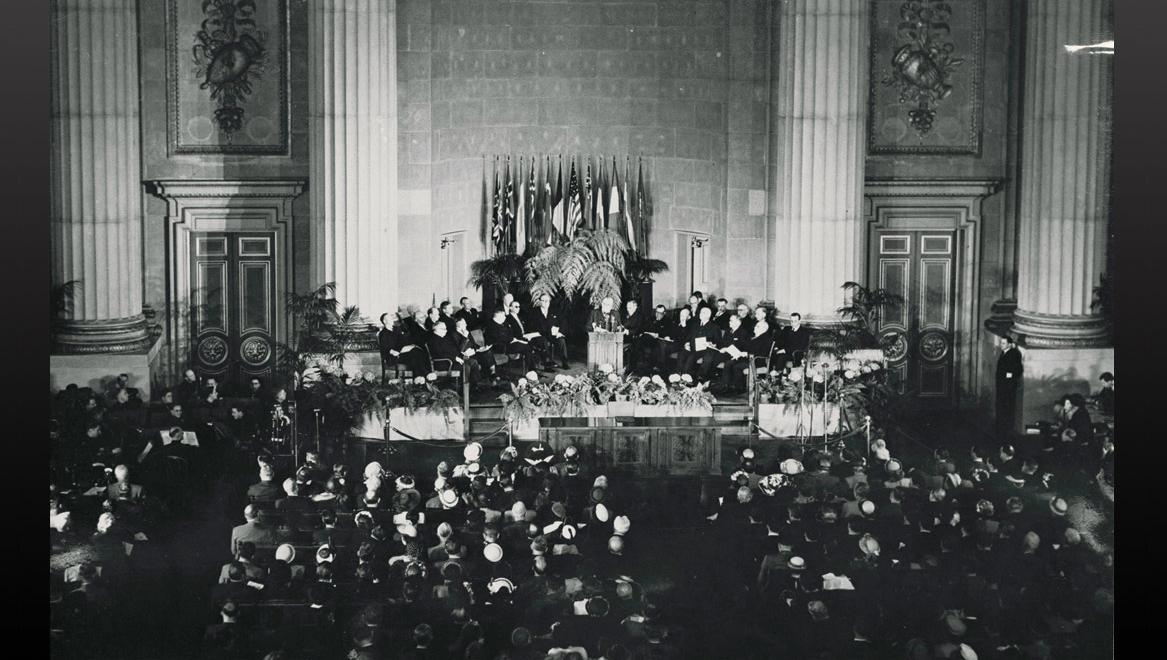
https://www.nato.int/cps/en/natohq/declassified_194081.htm
What is happening in Ukraine?
The Russo-Ukrainian War initially began in February of 2014 when Russia invaded Ukraine’s Crimean Peninsula. At the time, Ukraine was experiencing intense political upheaval that resulted in the ousting of Viktor Yanukovych, their then pro-Russian president. Russia defended their action as one taken to support the region’s proRussia separatists; Western powers viewed the occupation as an effort to maintain Russia’s influence within the Ukrainian government.
A dramatic escalation to the simmering conflict came in February 2022 when Russian president Vladimir Putin breached a ceasefire agreement with Ukraine by launching a full-scale invasion.
Is the war in Ukraine a world conflict?
The Russo-Ukrainian War has far-reaching implications for various international power structures. As a result, dozens of countries are now involved.
The North Atlantic Treaty Organization (NATO) plays a primary role in the international
involvement in the war. NATO was formed in 1949 following the end of World War II. It unified the United States, Canada and many Western European nations against the perceived threat of the Soviet Union- whose power was centralized in the Russian capital of Moscow- under an agreement that all member countries would unite to defend each other against attacks from outside parties.
These tensions formed the basis of the Cold War, which persisted for nearly 45 years between 1947 and 1991. Although the Soviet Union dissolved in December of 1991, NATO has endured and continues to stand in opposition to Russia’s influence in the broader European region. Russia’s demonstrated objective to expand its territorial domain has driven many neighboring countries to seek NATO membership to protect themselves, a move that Russian leadership typically opposes as it does not want a NATO presence so close to its borders. Ukraine has sought to join NATO for nearly fifteen years, further complicating its dispute with Russia.
Broader geopolitical alliances
have drawn additional world powers into the conflict, deepening global divisions. China, Iran and North Korea have aligned with Russia, with Western nations rallying behind Ukraine. Finally, the presence of nuclear weapons has further heightened the stakes. Many parties on both sides of the conflict possess considerable nuclear arsenals, and Putin has repeatedly invoked Russia’s nuclear capabilities to intimidate Ukraine’s allies.
How has US strategy toward Ukraine changed?
There are distinct differences between the strategies adopted by Presidents Joe Biden and Donald Trump to address the conflict. Biden prioritized military, financial and diplomatic support for Ukraine’s defense and imposed severe economic sanctions against Russia. In contrast, Trump has shifted focus toward direct negotiations between the two primary combatants, reducing aid and intelligence-sharing with Ukraine to compel their cooperation in peace talks, and adopting a more conditional
model of providing aid to Ukraine that prioritizes compensation in return for US support.
Both approaches have been controversial. Many took issue with the fiscal cost of the Biden administration’s support for Ukraine, which amounted to approximately $128 billion per the Council on Foreign Relations. Moreover, many Americans oppose US involvement in foreign wars.
More recently, Trump’s strategy
has drawn criticism across party lines in what some view as an unprecedented realignment of US foreign policy with Russian interests rather than those of long-standing Western allies. While peace seems to be a bipartisan priority, many are not comfortable with a resolution that results in the concession of Ukrainian territory to their Russian adversaries, nor one that further emboldens Putin’s expansionist efforts.
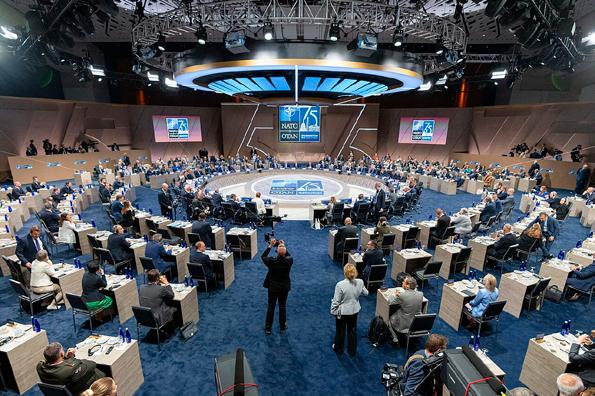

Review: Into the Woods at TAM
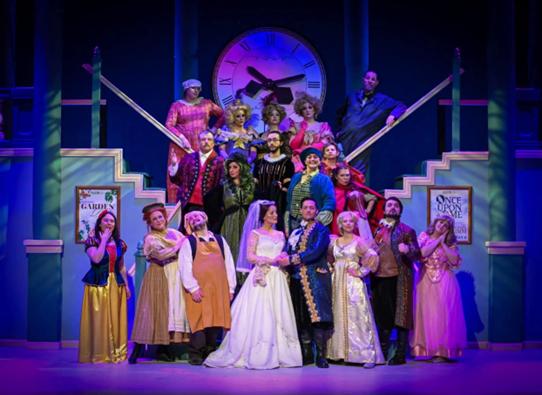
By Benjamin Heffner Staff Writer
Theatre at the Mount’s (TAM) latest production, Stephen Sondheim’s Into the Woods, brings together several classic Brother’s Grimm fairy tales, including Cinderella, Jack and the Beanstalk, and Rapunzel. Their stories are all tied together in a storyline about a childless baker and his wife seeking to start a family who fall under the witch’s curse.
Gail Steele, theatre professor and director of Theatre at the Mount, said she chose the show
as a gift to former longtime technical director Jeff Boisseau.
“It was one of his favorite musicals of all time, although there were many other people who were interested,” Steele said.
The show was directed by David Allen Prescott, a TAM veteran who recently won a Boston BroadwayWorld Award for Best Actor in a Play as Felix in TAM’s Fall 2023 production of Neil Simon’s The Odd Couple. Prescott took a creative approach to the show with a vision he had developed over many years, choosing to set it in a museum,
with the Narrator (Chris Cenotti), and members of the stage crew, playing museum workers. “I was inspired by the conceit used in Elton John’s AIDA, whereby the tragedy is softened by a modernday second chance, when the ‘reincarnated’ lovers encounter one another in a museum,” Prescott said. He added that he was excited to direct the show because he believes it celebrates everything it is to be human. “It sets the stage with the hope and optimism of these characters who wish for a better life, which is then tempered by the reality of limitations, of the nefarious actions of others, and the unintentionally damaging decisions that they themselves make. It’s ultimately a stark reminder that to be human is to be flawed – but that we’re all doing the best we can with the tools we’ve been given.”
The performance features many veteran TAM stars, including Doug Dame as the Baker, Melissa Gates as the Baker’s Wife, and Taylor Lawton as Cinderella’s Prince. There are also a few newcomers, such as Christina Pierro Biggins as the Witch, Ben Cohn as the Wolf/
Steward, and Rain Smallcomb as Jack. “Our veterans are very well known by our audience members who frequently attend shows here at TAM, and adding new members to our cast keeps that balancing act,” Steele said.
Chelsea Daniels, who recently starred as Maria in the 2024 holiday show The Sound of Music, plays Cinderella. After her mother passed away, her father remarried a miserable woman who made her the maid of the house. Despite Cinderella’s wishes to leave her home and marry a handsome prince being fulfilled, she still feels there’s something missing.
“When I leave the prince and decide to live with the Baker, [Little] Red [Riding Hood] and Jack, I’m excited, but at the same time I’m still missing the sense of home I had with my mother and father.” Daniels said. “The last line of the show is my last ‘I wish’ because I never really get what I wished for in the end. My life has changed because I’m now more independent and can take care of myself.”
Prescott acknowledged the cast as “one of the most remarkable casts I’ve had the pleasure of
working with,” as well as music director Senja Morgan and her orchestra for “playing some of the most complex and beautiful music written for the theatre.” Further, he says, “I’m very proud of the diverse group of voices that we’ve been able to assemble, and of the truly collaborative process it has been bringing this show to the stage.” Steele also acknowledged Morgan and her orchestra, which is one of the biggest for a TAM production in recent years. “Often, the orchestra overpowers the performance, but they [the TAM orchestra] completely blend in,” she said. We asked Mount Wachusett Community College students about their thoughts on the production. Science Major, Jay Morris, acknowledged the acting and costuming. “The use of a wooden cow for a prop was smart so that they could carry it into and out of scenes. I also thought it was smart for them to look at the audience while talking to the giant,” he said. Kaylee Guyotte, an early education major, didn’t agree with most of the show’s morals, but still enjoyed the ending.
Black History Month at MWCC: Acapella Singers Debut
By Princess Yeboah Assistant Editor
A capella singers went above and beyond by introducing essential black history to Mount Wachusett Community College Community on February 26, 2025 at 12:30 P.M. The performance, “And Now I See: Race, Racism, and American Music” was shown by a men’s a capella group, Ball in the House. They hospitably embraced the community with tunes originally sung by black singers and the history behind them such as “Hound Dog”, (Originally by Big Mama Thorton and sung by Elvis), “A Change is Gonna Come”, (Originally by Sam Cooke sung by Bob Dylan) “My Girl” and “This Little Light of Mine.”
Director of Student Life Director Kathy Matson and student life employees Mayra Alaniz Andrade and Marcus Campbell are the faces behind this event. “I first saw [Ball in the
House] when I was at an NAPCA conference, and immediately knew that I wanted to bring them here…We advertised it early, because they’re just an amazing group” says Mathson.
Mathson wanted to make sure this event was known throughout the community, which is why a flyer could be spotted just about anywhere on campus.
Ball in the House is located in Boston but is not strictly confined to just Boston. They have been making music ever since 1997, and most notably have opened for some famous artists including The Temptations, The Jonas Brothers, Smokey Robinson and Lionel Richie.
The acapella group not only gifted the community with their voices, but also shared important history tied to profound songs we know and love today. Group member Wallace Thomas an African-American shared an incident in which he was the target of racism. While the group
was staying at a hotel, staff questioned Thomas, demanding to know what he was doing there.
“Right here and right now we all have to dedicate ourselves to being anti-racist.” Actively using our [voices] to combat racism,” Thomas says in his message during a performance to the community.
Matson also adds that bringing in Ball in the House to MWCC was essential in spreading awareness for Black History Month. “We opened it to the community. And I think it does bring people together, because they’ve got a really great message.” Andrade sees Ball in the House as a great benefit to increase the communities awareness saying, “It’s so important to bring awareness about our traditions and just all traditions as a whole, and everyone’s welcome to enjoy.”
Students in response had much to say about what the event means for them. Crystal Monahan, an Art major says,
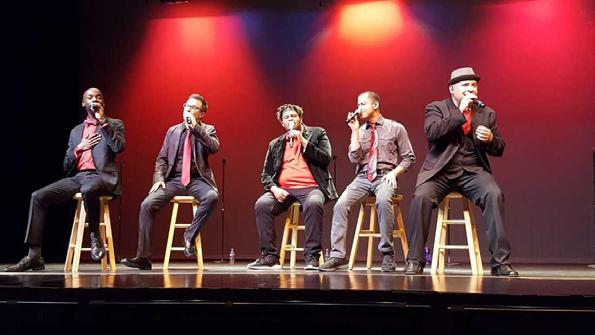
“this is a primarily [white community] and we don’t learn enough about people who are not white or straight. It’s a learning experience… I want to learn more about the people around me and the people I don’t get to meet all the time.” Student Jahzara Desravines had a special connection to the event. “The event really [dissected] the history behind black people in America, and opened my eyes to see how black artists were
able to use music to express themselves.”And fittingly, the group ended the performance with the classic, “Man in the Mirror” by Michael Jackson. The song’s message is to look at yourself and not other things to make a change. This really resonated deeply with the band. Ball in the House’s musical touch on the community is an impact that will stand the test of time here at MWCC.

COMICS
Created by Tom Hill Jr.
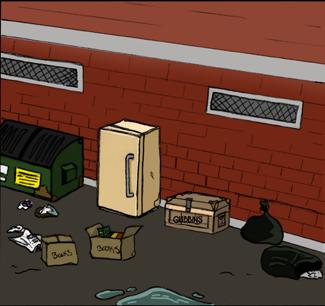
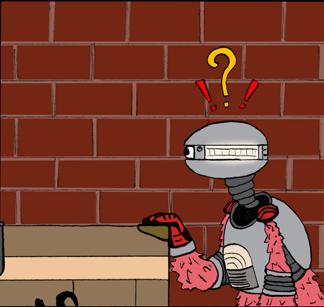


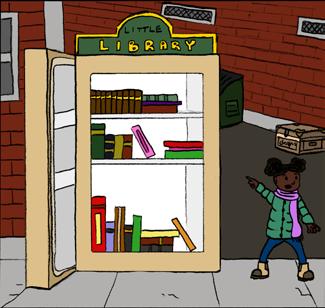

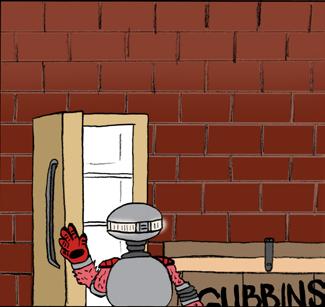


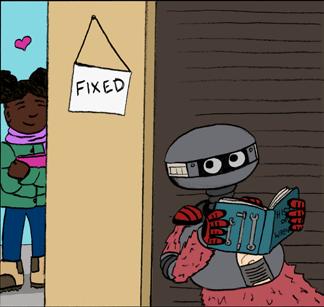
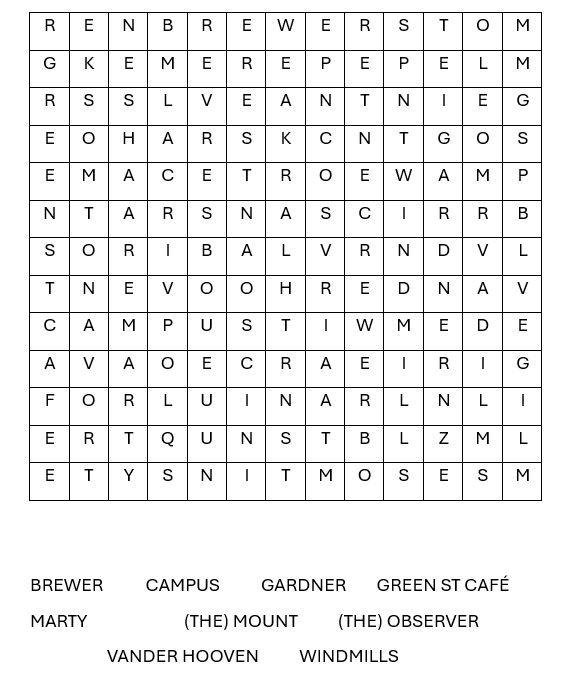


What’s Cookin’ at MWCC
Aunt Pat’s Irish Soda Bread
Submitted by Desiree Leader
My Aunt Pat was my favorite aunt, and I have many fond memories of her visits when I was a child. She was beautiful, with a gorgeous head of red hair, and so funny. Her visits filled our modest home with joy and laughter. One of the things that I loved about her popping by is that she often brought a loaf of her homemade Irish bread. Her daughter made it a few weeks ago for her mother’s celebration of life and was kind enough to share the recipe with me. I think I will make it tonight, slather a slice in butter, and make myself a nice cup of tea to go with it. Thank you for the memories, Aunt Pat.
Ingredients
• 5 cups flour
• ½ cup shortening (Crisco)
• ¾ cup sugar
• 1 cup raisins
• 1 tbs caraway seed (optional)
• 1 tsp baking powder
• 1 egg
• 1 cup milk – if dry add more
Directions:
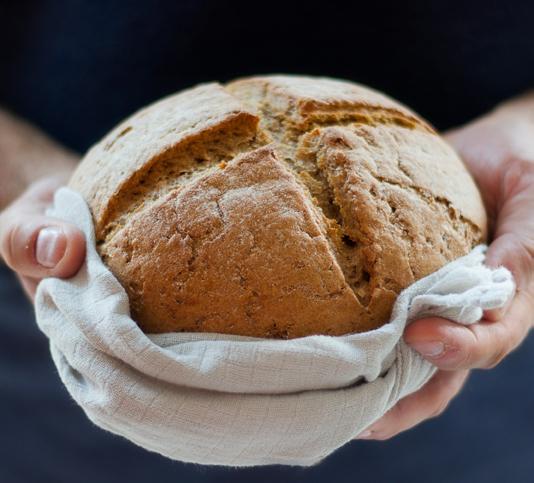
1. Important part: rub in shortening with the flour – use hands and combine it, do not just mix or clump in – work in together with hands.
2. Then once blended, add sugar, raisins, caraway seeds, baking powder – mix thoroughly.
3. Beat egg and mix with milk then add to mixture. Knead together to form dough.
4. On a floured board or counter – once completely mixed, split dough into 2 – then create 2 round loaves and put on floured cookie sheet – make sign of cross with knife in the middle, then cook. (Don’t set out for a long time – right in oven) 450 for 5 minutes, 350 for 35 minutes
5. Watch bread in oven that bottom doesn’t burn.

What’s Cookin’ at MWCC
Colcannon
Submitted by Wendy Joubert
A traditional Irish dish made from mashed potatoes and parsnips with fried cabbage folded in. Colcannon is a perfect side dish for your St. Patrick’s Day meal. This recipe was made from ingredients found at Marty’s Market and in their produce boxes.
Ingredients
• 8 small red potatoes (about 1 lb.), peeled and quartered
• 1 cup cabbage (half of a small head), chopped into 1” pieces
• 1 medium turnip, peeled and chopped into 1” pieces
• ¼ cup water reserved from the water you boiled the vegetables in
• ¼ teaspoon chicken bouillon powder
• 1 tablespoon oil
Directions:

1. Place the potatoes and parsnips into a large pot. Cover the vegetables with at least 3 inches of water. Place the pot on the stove and bring the water to a boil. Boil for 10 minutes or until the vegetables are tender.
2. While the vegetables are boiling, place the oil in a pan and add the cabbage. Over medium high heat, cook the cabbage until tender and a little brown around the edges (around 4-5 minutes). Once the cabbage is done, turn off the heat and set the cabbage aside.
3. Reserve ¼ cup water from boiling the vegetables. Turn off the heat and drain the potatoes and parsnips. Place the vegetables back into the pot and add ¼ cup reserved water and chicken bouillon. Mash the vegetables to your liking. Finish by folding in the cabbage.

Mount Observer Polls
We asked you: Who was the first Irish Catholic Presdient of
The correct answer was...John F. Kennedy, the 35th president! Kennedy’s Irish ancestry came from both of his parents’ families, who emigrated from Ireland. Joe Biden was the second Irish Catholic president
CARL’S CORNER
Introducing the new Carl Catamount! Carl will be hosting his own artist showcase each month, so if you are artistically inclined and wish to join the fun, send some sample art pieces and a drawing of Carl to mountobserver@mwcc.mass.edu and he’ll show them off here!
Happy Drawing!

Editor-in-Chief:
Assistant
Staff
